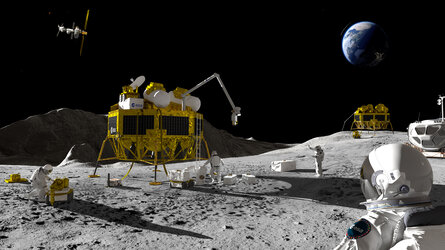European space firms set specifications for optical links
Sending vast quantities of data between satellites speedily and securely means using light to communicate. Now a group of space companies, research centres and universities working with ESA has established a series of specifications on how exactly satellites should use light to talk to one another – and to link to their ground stations.
To build satellites that can easily use laser light to communicate, manufacturers will need optical devices that can recognise and talk to one another at the high data rates that will be needed in the future.
By supporting and coordinating discussions between space companies, research centres and universities in Europe and in Canada – as part of ESA’s programme of Advanced Research in Telecommunications Systems – ESA is helping to establish a set of specifications for ultra-high-speed optical links.
Called “ESA Specifications for Terabit/second Optical Links”, the initiative aims to foster the development of interoperable commercial products and services for optical high-capacity satellite networks, including their terrestrial components.
It seeks to extend available standards from space communications as well as terrestrial networks. This will enable space companies to integrate future satellites easily and seamlessly into terrestrial networks, as well as to develop and use commercial off-the-shelf components and software.
The approach gives industry a voice in preparations for the future and is similar to efforts by the Space Development Agency in the US. ESA is coordinating 18 companies from eight countries to define a set of common specifications covering future optical communications in and from space.















 Germany
Germany
 Austria
Austria
 Belgium
Belgium
 Denmark
Denmark
 Spain
Spain
 Estonia
Estonia
 Finland
Finland
 France
France
 Greece
Greece
 Hungary
Hungary
 Ireland
Ireland
 Italy
Italy
 Luxembourg
Luxembourg
 Norway
Norway
 The Netherlands
The Netherlands
 Poland
Poland
 Portugal
Portugal
 Czechia
Czechia
 Romania
Romania
 United Kingdom
United Kingdom
 Slovenia
Slovenia
 Sweden
Sweden
 Switzerland
Switzerland




























